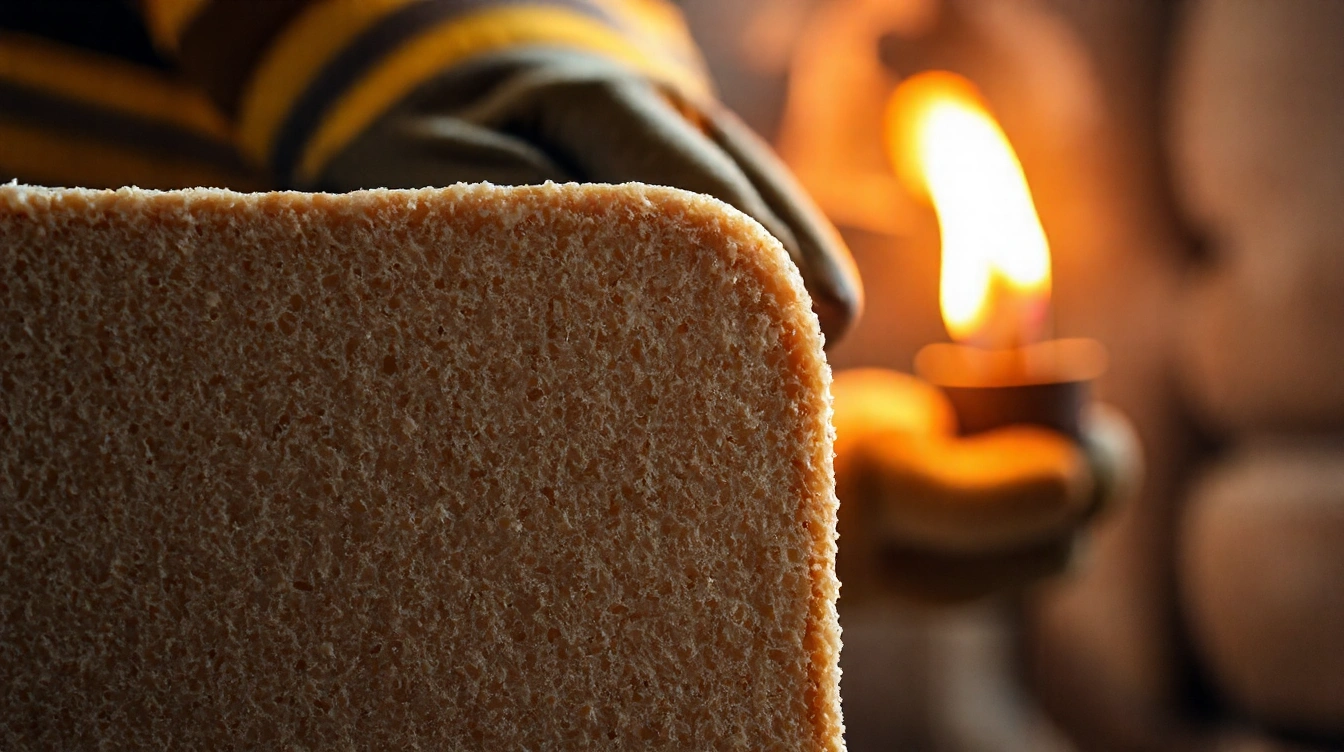Rockwool insulation panels combine mineral wool’s natural fire-resistant properties with advanced manufacturing to create a robust barrier against flames. Their unique structure offers superior fire protection while maintaining thermal performance. Understanding how Rockwool meets stringent fire safety standards and integrates effectively during installation can transform building safety, reducing fire risks without compromising on insulation quality. This guide reveals what makes Rockwool panels a trusted choice for fire-resistant construction.
Rockwool Insulation Panels: Composition, Structure, and Fire-Resistant Properties
Rockwool insulation panels are made primarily from mineral wool composition, which consists of natural basalt rock and other non-combustible materials melted and spun into dense fibers. This manufacturing process creates a highly durable and fibrous structure that provides excellent thermal and acoustic insulation. The dense, interwoven fibers trap air effectively, enhancing energy efficiency while maintaining a robust form that resists compression over time.
Also read : Enhance your home with Monocouche Render System
One of the most significant advantages of Rockwool insulation panels is their inherent fire-resistant properties. Due to their mineral wool composition, these panels are non-combustible and can withstand temperatures far exceeding those that typical building materials endure. This makes Rockwool an ideal choice for fire-resistant insulation in both residential and commercial buildings, where enhanced fire safety is critical. The panels do not ignite, melt, or emit toxic smoke when exposed to high temperatures, providing an additional layer of protection during fire incidents.
The key fire safety features of Rockwool insulation panels include their ability to act as a thermal barrier and resist flame spread. This reduces the risk of fire propagation through walls or ceilings and protects structural elements from heat damage. Furthermore, Rockwool insulation panels contribute to maintaining the integrity of fire-resistant assemblies, often helping buildings comply with rigorous fire codes. Their combination of mineral wool composition and non-combustible nature ensures that Rockwool panels not only improve energy performance but also significantly enhance overall fire safety. For detailed information on durable fire-resistant wall solutions, consider exploring a specialized Rockwool Insulation product range.
Have you seen this : Are There Innovative Approaches to Improve Productivity in UK Home Offices?
Fire Safety Standards, Certifications, and Safety Ratings
Understanding fire safety certifications and building safety standards is crucial when selecting materials like Rockwool panels. These standards ensure that construction components meet stringent criteria for fire resistance, helping to protect lives and property.
Rockwool panels undergo rigorous fire resistance testing to determine their performance under extreme heat. Tests are conducted according to international standards such as Euroclass in Europe and ASTM in the United States. For instance, Euroclass classifies materials from A1 (non-combustible) to F (highly flammable). Rockwool insulation typically attains the highest ratings, demonstrating exceptional fire resistance and minimal smoke production.
Safety ratings provide a direct indication of how Rockwool panels behave during a fire event. A high fire rating means the insulation maintains structural integrity for longer periods, delaying fire spread and providing crucial extra time for evacuation and firefighting. This performance also supports compliance with fire safety certifications required by building codes, which are increasingly demanding due to stricter regulations worldwide.
In practical terms, builders and architects can rely on these building safety standards and fire safety compliance certifications to specify Rockwool panels, confident they contribute significantly to safer buildings. For more detailed information about the fire-resistant qualities of these materials, exploring resources on Rockwool Insulation is highly recommended.
Installation Methods and Best Practices for Fire Protection
When it comes to Rockwool installation methods for fire safety, precision and adherence to best practices are essential. Properly installing Rockwool panels creates effective fire barriers that significantly enhance building resilience against fire hazards.
The primary goal of fire-safe panel installation is to ensure an uninterrupted, dense layer that resists flame penetration and heat transfer. Always begin by preparing the wall or ceiling surface, ensuring it is clean and dry. The Rockwool insulation should be cut accurately to fit snugly between studs or joists, minimizing gaps where heat or smoke could penetrate.
Installing mineral wool for fire safety involves understanding its properties: it is fire-resistant, non-combustible, and does not emit toxic fumes. However, improper installation can compromise these benefits. One common mistake is leaving gaps or compressing the insulation excessively, reducing its thickness and fire resistance. Another is failing to secure panels adequately, leading to displacement over time.
Placement is critical; Rockwool panels should be integrated into the building envelope where fire risk is highest such as around electrical outlets, HVAC systems, and adjacent to flammable materials. Combining Rockwool with other fire protection measures, like fire-resistant drywall or intumescent sealants, enhances overall safety. Make sure to overlap seams tightly and seal joints properly to maintain continuous fire barriers.
Following these installation tips ensures the building benefits fully from Rockwool’s fire-protective qualities, making it a reliable component of any fire safety strategy. For detailed material quality and design considerations, exploring options like Rockwool Insulation can further optimize fire protection outcomes.
Comparing Rockwool Panels with Other Fire-Resistant Insulation Materials
When evaluating Rockwool vs fiberglass and other fire-resistant insulation options, several critical factors come into play: fire performance, thermal resistance, durability, and environmental impact. Rockwool insulation stands out due to its exceptional fire resistance and robust thermal properties.
One of the main differences between Rockwool and fiberglass is their fire performance. Rockwool is made from natural volcanic rock and can withstand temperatures exceeding 1000°C without melting or emitting toxic fumes. Fiberglass, while also fire-resistant, tends to have a lower melting point and may release harmful gases when exposed to extreme heat. This makes Rockwool a superior choice for fire safety in residential and commercial buildings.
Comparing Rockwool to foam insulation and other mineral wool alternatives, Rockwool remains unmatched in terms of fire resistance. Foam insulation materials generally have lower fire thresholds and often require additional fire-retardant treatments. Mineral wool alternatives share benefits with Rockwool, such as non-combustibility and soundproofing qualities, but may differ in density and ease of installation.
Insulation performance is not solely about fire resistance. Thermal insulation is equally vital, and Rockwool offers excellent thermal retention properties, helping reduce energy costs. In contrast, some foam insulations provide better R-values per inch but compromise on fire safety. Choosing between these materials relies heavily on the specific needs of the project, balancing thermal and fire resistance.
When deciding on the right fire-resistant insulation, consider the following:
- The maximum temperature resistance of the insulation material
- Potential toxic emissions during a fire event
- Environmental impact and sustainability
- Ease of installation and compatibility with existing building structures
For those prioritizing fire safety without sacrificing insulation performance, Rockwool panels provide a durable, effective solution. Their non-combustible nature and ability to maintain integrity under intense heat establish them as a trusted choice.
Verified Performance: Case Studies and Real-World Fire Incidents
Exploring Rockwool case studies reveals consistent evidence of this material’s exceptional fireproofing capabilities. Several real-world fire incidents demonstrate that buildings insulated with Rockwool experienced significantly improved safety outcomes. For example, during fires, Rockwool’s non-combustible nature helps contain flames, preventing rapid fire spread and allowing occupants more time to evacuate safely.
One notable fireproofing real example occurred in a commercial building where Rockwool insulation limited smoke penetration and protected structural elements from intense heat. This directly contributed to lower damage and minimized hazardous conditions, underscoring the material’s critical role in fire safety systems.
Construction projects integrating Rockwool often report positive experiences regarding fire safety. These Rockwool success stories include testimonials from builders and engineers who emphasize Rockwool’s reliability and ease of installation. These insights emphasize how choosing Rockwool not only meets regulations but provides enhanced peace of mind about building integrity under fire stress.
Experts reviewing these cases concur about Rockwool’s outstanding real-world fire performance. They highlight its inherent fire resistance, thermal stability, and ability to maintain structural protection even under extreme conditions. As a result, incorporating Rockwool in insulation strategies significantly raises a building’s resilience, shown repeatedly across various verified case studies.
For a reliable, durable, and fire-resistant wall solution, Rockwool Insulation is a proven choice, recognized for its performance both in controlled tests and real emergencies.
Practical Tips and Expert Guidance for Choosing and Implementing Rockwool Panels
Selecting the right Rockwool panels is crucial when prioritizing fire safety in building projects. Key criteria include the panel’s fire resistance rating, density, and thermal insulation properties. Choosing Rockwool for fire safety means verifying that the panels meet recognized standards, such as the European EN 13501 classification or equivalent local codes, to ensure unparalleled protection during fire incidents.
Experts emphasize the importance of proper installation to maintain the fire protection efficacy of mineral wool panels. Secure fitting without gaps prevents fire and smoke from bypassing the insulation. Fire safety recommendations often highlight sealing edges with fire-resistant sealants and installing vapor barriers correctly to avoid moisture buildup, which can compromise the insulation performance over time.
Regular maintenance and inspection are also essential parts of building safe with mineral wool. This involves checking for signs of physical damage, moisture intrusion, or compression that might reduce the panels’ insulating and fire-resistant capabilities. Implementing a routine inspection schedule helps identify potential issues early, ensuring the long-term effectiveness of Rockwool panels as a durable fire protection solution.
For projects seeking an efficient and reliable insulation solution, Rockwool Insulation offers panels designed with these expert guidelines in mind, providing durability, fire resistance, and thermal performance that meet stringent safety requirements.
Frequently Asked Questions About Rockwool Fire Safety
Answering key concerns on fire resistance and safety features
What makes Rockwool fire-resistant?
Rockwool, also known as mineral wool, is made from natural stone and recycled slag, which inherently withstands high temperatures. Its composition allows it to resist flames and act as a barrier, slowing the spread of fire in buildings. This characteristic is why it is a preferred fire-resistant material in construction, providing effective protection where fire safety is essential.
Is Rockwool insulation completely fireproof?
Although Rockwool is highly fire-resistant and can endure temperatures up to approximately 1000°C (1832°F), it is not entirely fireproof. It will not ignite, but intense prolonged heat can eventually degrade its structure. However, it significantly delays fire propagation, giving building occupants more time to evacuate and reducing overall damage. Understanding this distinction between fire resistance and fireproofing is crucial when selecting insulation materials.
Does Rockwool emit toxic fumes during a fire?
One major concern about insulation materials is whether they release harmful gases if exposed to fire. Rockwool insulation is known for its low smoke emission and does not burn or melt easily. This reduces the risk of toxic fumes compared to other materials like some plastics, enhancing its status as a safer choice for building fire safety.
Can Rockwool be used in all parts of a building for fire safety?
Yes, Rockwool is versatile and suitable for walls, ceilings, roofs, and around HVAC systems to improve fire resistance throughout a building’s construction. Its mineral wool composition also offers additional benefits such as soundproofing and thermal insulation, providing multiple advantages in one solution.
For those seeking a durable and fire-resistant wall insulation solution, exploring Rockwool Insulation options can greatly enhance building safety while maintaining high performance in other areas like acoustics and energy efficiency.











